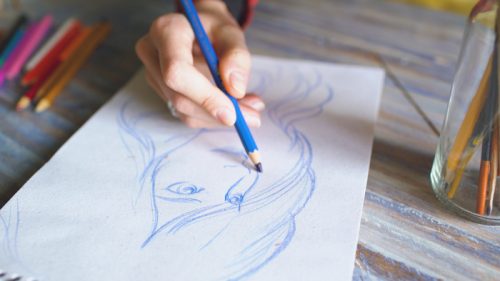This content was published: March 21, 2019. Phone numbers, email addresses, and other information may have changed.
Visual Arts Opportunities with PCC Community Ed
PCC Community Education
Visual arts surround us and are used in a variety of ways. The food you eat, the road signs you see on a drive, your house (inside and out), websites, and printed communications are all examples of it. The skillset is not used purely for artistic pursuits -, but to communicate a range of messages, feelings, and even basic information. Because of this, there is no shortage of enjoyment that can be acquired from the visual arts. Which PCC Community Education visual arts course is the best fit for you?
What Are the Visual Arts?
Unlike other forms of art, which include music, drama and literature, visual arts involve painting, sculpting and photography. However, this definition may lead one to imagine the types of art found in the Portland Art Museum and various galleries rather than what is seen in everyday life. In reality, visual arts are everywhere. If you create something visual, it may indeed be meant for a gallery, but you are not limited to such categories of expression by any means.
Visual arts use many media, not just nature and paper, as one organization boils it down to. What’s more, visual arts are often combined with harder sciences, such as architecture and structural engineering, to arrive at the final result.
Visual Arts in History
Cave wall paintings are some of the earliest documented examples of the visual arts. These paintings depicted scenes from the everyday lives of the artists’ societies, such as hunting, harvesting, and worship. Later, as humanity’s technology levels improved, artwork expanded to include sculpture, painting on other media, printing, photography, and finally, digital media.
Much of the material that has stood the test of time fits the common definition of art. Paintings and sculptures, in particular, are known for their ability to convey emotions as they depict specific scenes or people. Concepts such as peace, love, anger, and war are all well-covered by these exemplary works.
Visual Arts Today
Today, art is still important for its beauty and its ability to spark specific emotional responses or convey universal concepts. However, the field has expanded to include many commercial applications, such as product design, advertising, home decorating, and more. It is also combined with text to draw attention to specific information, as is seen on road or business signage. In some cases, such as the production of movies, it is combined with many other types of arts to create a coherent and complex piece.
Mental Health Benefits of Visual Arts
Creating artwork, even as a pastime, is known to help reduce stress and feelings of fear. Because of this, adult coloring books and similar “one-off” items are good sellers. This has even been researched, and the stress relief benefits are proven.
In therapy, visual arts projects allow people to deal with fear and other negative emotions in a safe way. It also lets people express things that they have a hard time putting into words. For children, creating visual arts is good for increasing dexterity and coordination. Their art may not look like much, but it is an important step to perfecting these motor and visual skills.
Of course, those who have good aptitude at the visual arts can go on to use them in their careers once they’ve mastered their media. There are many visual art forms and obtaining that skillset isn’t as hard as it may seem – especially within the supportive environment of PCC Community Ed. To find out which form is best for you, take a class in the visual arts at PCC today.

